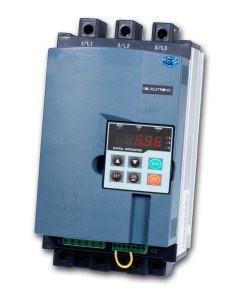Softstarters
When you turn on an electrical load, so-called inrush of current flows, which may be several times greater than the normal operating current. With the use of soft starters this increased inrush current can be avoided. Without soft-start, one of the following problems may occur: mains voltage sag, high torques on the electric motor, or a large acceleration of the mechanical components. But how do the soft starters work, and how is the inrush current limited?
Softstarter Operation
There are several ways soft starters operate. For example, a resistor may be connected to the electrical load in series, which is then bypassed in normal operation, for example, with a relay. However, if this does not succeed, this can cause the resistor to heat up tremendously and, in the worst case, start a fire. Therefore it is adamant to note that only hard flammable resistors or those with built-in backup feature can be used. Instead of this, an ohmic resistor, or so-called NTC thermistor resistor, can also be used. This has characteristic high impedance at low temperatures and conductivity at higher temperatures with only low resistance. A bypass is therefore no longer necessary and there is no risk of overheating. However, after switching off the NTC consumer must wait until it’s cooled down again for its current limiting properties to function again. This may take several minutes; however, it is possible, by installing a bypass which incorporates in the relay circuit, to shorten the time necessary before switching on the bypassed NTC.
Soft starters with phase-fired control
The so-called phase-fired controller offers a third option for a smooth start-up, but only for AC-powered motors. This offers the possibility of a continuous increase of electricity up to the point of full operation. This is achieved with a circuit that contains a TRIAC, among other things. This device blocks the current in each half-wave up to a certain point and leaves the rest for the next zero-crossing circuit. Then the current is repeatedly blocked. Depending on what time this happens, the result is a different mean-power, which is very low to begin with and then is slowly increased, until the normal operation, in which the TRIAC no longer blocks the current. This method can also be used for electric motor speed control.
« Back
